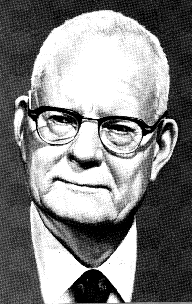This week (October 14) 114 years ago, William A. was born. Deming, an American engineer and statistician, who is considered the father of modern quality theory, and to a large extent also the first organizational consultant.
Written by: Udi Lam

William Edwards Deming, 1900 – 1993
This week (October 14) 114 years ago, William A. was born. Deming, an American engineer and statistician, who is considered the father of modern quality theory, and to a large extent also the first organizational consultant.
Deming began his professional career as an electrical engineer, and at the same time studied mathematics and eventually received a doctorate in statistics and physical mathematics. He first became interested in quality control following his meeting in 1927 with Walter Shewhart of Bell Laboratories, who for the first time applied statistical control methods in the production processes of control panels for telephone systems. Deming prepared written lectures for Shewhart, and thus learned most of his ideas.
In World War II, Deming participated in a team of experts who worked to improve production times in the American arms industry, and was among those who established the first quality standards for the arms of the US military, some of which are still in use today in all industries engaged in mass production. The "statistical process control" method which he implemented on a large scale at the time, and which led to the optimization of processes, the improvement of quality (the decrease in the amount of defective products reaching the customer) and the shortening of delivery times is taught today in most universities as part of engineering studies.
After the war, most of the American industry moved to the production of products for commercial use, and in addition, an economic and industrial boom began in the USA. These led to the abandonment of Deming's methods, because most manufacturers did not see the need to be efficient in an age of abundance. In retrospect, it became clear after about 30 years, during the energy crisis and the economic crisis of the early 80s, that this approach caused great damage to the American economy.
Those who actually asked to be helped by Deming's methods were the Japanese; After the war, the Japanese economy and industry were devastated. Deming, who then served in the military government in Japan and participated in the compilation of the population census there, was asked by the heads of industry there to advise them on how to restore and optimize their factories in an era of poverty and scarcity. During the 50s, the Japanese thoroughly studied his methods and applied them in almost all branches of industry, especially in the automotive and electronics industries. His influence was so great that in Japan a national award for quality was established in his name, as well as a special day to mark the "Statistics Festival".
Only in the early 80s, American industry rediscovered Deming. He met with some of the heads of industry in the US (whose management methods and ways of working he severely criticized, to say the least) and advised the Ford company which was in a severe crisis. Within 4 years Ford went from heavy losses with his help to becoming the most profitable American car company.
After that he wrote several books on quality control and management, the most famous of which was "Getting out of the crisis" which included his 14 principles for management, and became a source of inspiration all over the world for quality and management methods in organizations.
Deming continued to work almost until his last day, and in 1993 he established the "Deming Center" at the Library of Congress in Washington.

2 תגובות
In the USA the main specialization today is how to create a product that will be consumed within 5-7 years for sure. Big, expensive, and collected - the most important color! Cars, electrical appliances, etc. start to break down after 5 years and in 7 years it is no longer worth repairing. This trend was led by the first Henry Ford, who sent engineers to scrap yards to check which part broke down and caused the car to be completely destroyed in an accident. Every part that did not cause destruction was redesigned at a lower design level. But after it was discovered that the KING PIN, i.e. the conducting rod from the steering wheel to the wheels, never broke and did not cause any car to end up in a scrap yard, and Ford demanded to reduce the diameter of the rod and lower the quality of the steel, the engineers rebelled and did not agree to make the change.
I only buy cars made in Japan lately. I had two over 10 years each (one still with me, the other sold). The cost of repairs for the first one was 0. There were costs to change oils, tires, etc. but no repair. For a second, 2 burned out bulbs had to be replaced. Did I say 10 years? About 200,000 km each? Before, I had 4 German-made cars, all of the same model (I won't mention the model, but they are very luxurious). The first two are of the same quality as the Japanese ones, the last two are of the same quality as the American ones - after 5 years, huge expenses on repairs, and spending time in the garage. So I stopped buying a car made in Europe.
It turns out that the man was born, grew up and lived in the wrong place,
Because for most Americans quality means size,
What is bigger is more beautiful,
The more expensive, the better.
This is evidenced by the typical American attitude:
"What a beautiful house (that cost millions)"!
One who measures beauty and goodness by size and cost
is not a quality expert,